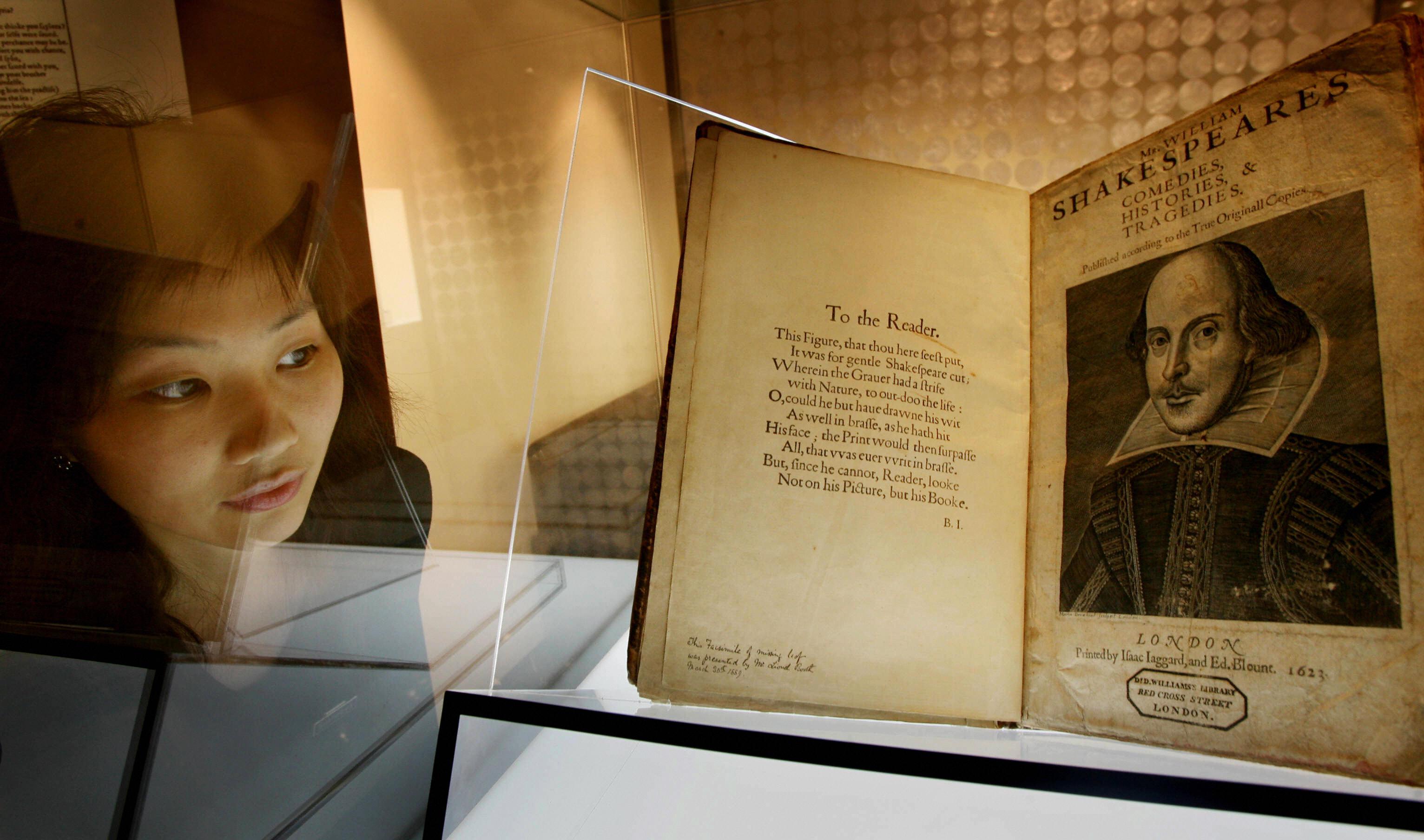Once there were 800, and two days ago there were 232, and now there are 233. The New York Times reports that a previously unknown first folio of Shakespeare plays has arrived out of the historical mists (i.e. surfaced in a library in Northern France), carrying clues to the playwright’s religious leanings and how he intended his works to be performed.
This news calls for the dramatic, dialogic form known as a Q-and-A.
Q: And wherefore should I care about this book?
A: Because it was unearthed in holdings left
behind by Jesuit scholars which implies
that Shakespeare was beloved by Catholic folk
and maybe was a secret Catholic too!
(Or at least, so suggests Harvard professor Stephen Greenblatt. Others are more skeptical.)
Q: And wherefore else?
A: Some notes inscribed by hand
(One “hostess” changed to “host,” one “wench” to “fellow”)
reflect a soul revising on the go
perhaps, while staging Henry IV—and that
“I’ve never seen,” one Shakespeare scholar said.
Q: Can we stop speaking like this please? I have no idea what you’re talking about.
A: Yes. Sorry. Shakespeare scholar Eric Rasmussen, author of “The Shakespeare First Folios: A Descriptive Catalogue,” told the Times that he had never encountered “this kind of gender switch”—a director appeared to have changed a character in Henry IV from a woman to a man—in a folio before. It may seem inconsequential, but tracking tiny differences among primary source documents helps separate what Shakespeare originally wrote from what was later introduced in error. And we can speculate from scribbles like these how the playwright’s work was presented to audiences shortly after he died.
Speaking of shams and bona fides, Rasmussen, called in to the Saint-Omer library from the United States to confirm the authenticity of the new folio, was able to do so within five minutes. “This is huge,” he said. “First folios don’t turn up very often, and when they do, it’s usually a really chewed up, uninteresting copy. But this one is magnificent.”
Q: What is a first folio?
A: Experts differentiate between the early quartos, some of which may have circulated during Shakespeare’s life, and the seemingly more-accurate first folios, published seven years after his death in 1623. The quartos may have drawn on Shakespeare’s foul papers, or rough drafts, while the 800 folios—collating 36 of the poet’s 38 known plays—are thought to contain more polished versions of earlier work. They are also our only source of masterpieces like The Tempest and Macbeth.
Q: Are they valuable?
A: Very. As the Times notes (via a bestiary analogy the bard might appreciate):
Today, first folios are tracked like rare black rhinoceroses, right down to their disappearances. One is known to have burned in the Great Chicago Fire of 1871; another went down with the S.S. Arctic off Newfoundland in 1854.
In 2006, Christie’s auctioned off another such black rhinoceros for $6.8 million. But according to the BBC, the Saint-Omer library has no plans to sell its first folio. Instead, it will display the text “as the centerpiece of the forthcoming exhibition of its rare books by English authors.”
